Books by Geoffrey Braswell

3,000 Years of War and Peace in the Maya Lowlands presents the cutting-edge research of 25 author... more 3,000 Years of War and Peace in the Maya Lowlands presents the cutting-edge research of 25 authors in the fields of archaeology, biological anthropology, art history, ethnohistory, and epigraphy. Together, they explore issues central to ancient Maya identity, political history, and warfare.
The Maya lowlands of Guatemala, Belize, and southeast Mexico have witnessed human occupation for at least 11,000 years, and settled life reliant on agriculture began some 3,100 years ago. From the earliest times, Maya communities expressed their shifting identities through pottery, architecture, stone tools, and other items of material culture. Although it is tempting to think of the Maya as a single unified culture, they were anything but homogeneous, and differences in identity could be expressed through violence. 3,000 Years of War and Peace in the Maya Lowlands explores the formation of identity, its relationship to politics, and its manifestation in warfare from the earliest pottery-making villages through the late colonial period by studying the material remains and written texts of the Maya.
This volume is an invaluable reference for students and scholars of the ancient Maya, including archaeologists, art historians, and anthropologists.

The ancient Maya created one of the most studied and best-known civilizations of the Americas. Ne... more The ancient Maya created one of the most studied and best-known civilizations of the Americas. Nevertheless, Maya civilization is often considered either within a vacuum, by sub-region and according to modern political borders, or with reference to the most important urban civilizations of central Mexico. Seldom if ever are the Maya and their Central American neighbors of El Salvador and Honduras considered together, despite the fact that they engaged in mutually beneficial trade, intermarried, and sometimes made war on each other. The Maya and Their Central American Neighbors seeks to fill this lacuna by presenting original research on the archaeology of the whole of the Maya area (from Yucatan to the Maya highlands of Guatemala), western Honduras, and El Salvador.
With a focus on settlement pattern analyses, architectural studies, and ceramic analyses, this ground breaking book provides a broad view of this important relationship allowing readers to understand ancient perceptions about the natural and built environment, the role of power, the construction of historical narrative, trade and exchange, multiethnic interaction in pluralistic frontier zones, the origins of settled agricultural life, and the nature of systemic collapse.
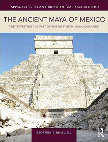
The archaeological sites of Mexico’s Yucatan peninsula are among the most visited ancient cities ... more The archaeological sites of Mexico’s Yucatan peninsula are among the most visited ancient cities of the Americas. Archaeologists have recently made great advances in our understanding of the social and political milieu of the northern Maya lowlands. However, such advances have been under-represented in both scholarly and popular literature until now.
The Ancient Maya of Mexico presents the results of new and important archaeological, epigraphic, and art historical research in the Mexican states of Yucatan, Campeche, and Quintana Roo. Ranging across the Middle Preclassic to the Modern periods, the volume explores how new archaeological data has transformed our understanding of Maya history. The Ancient Maya of Mexico will be invaluable to students and scholars of archaeology and anthropology, and all those interested in the society, rituals and economic organisation of the Maya region.
"The ancient Maya shaped their world with stone tools. Lithic artifacts helped create the citysca... more "The ancient Maya shaped their world with stone tools. Lithic artifacts helped create the cityscape and were central to warfare and hunting, craft activities, cooking, and ritual performance. The Technology of Maya Civilization examines Maya lithic artefacts made of chert, obsidian, silicified limestone, and jade to explore the relationship between ancient civilizations and natural resources. The volume presents case studies of archaeological sites in Guatemala, Mexico, Belize, and Honduras. The analysis draws on innovative anthropological theory to argue that stone artefacts were not merely cultural products but tools that reproduced, modified, and created the fabric of society.
"
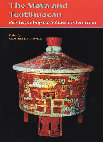
Since the 1930s, archaeologists have uncovered startling evidence of interaction between the Earl... more Since the 1930s, archaeologists have uncovered startling evidence of interaction between the Early Classic Maya and the great empire of Teotihuacan in Central Mexico. Yet the exact nature of the relationship between these two ancient Mesoamerican civilizations remains to be fully deciphered. Many scholars have assumed that Teotihuacan colonized the Maya region and dominated the political or economic systems of certain key centers—perhaps even giving rise to state-level political organizations. Others argue that Early Classic rulers merely traded with Teotihuacan and skillfully manipulated its imported exotic goods and symbol sets to increase their prestige.
Moving beyond these traditional assumptions, the contributors to this volume present extensive new evidence from archaeology, iconography, and epigraphy to offer a more nuanced understanding of the interaction between the Early Classic Maya and Teotihuacan. Investigating a range of Maya sites, including Kaminaljuyu, Copán, Tikal, Altun Ha, and Oxkintok, they demonstrate that the influence of Teotihuacan on the Maya varied in nature and duration from site to site, requiring a range of models to explain the patterns of interaction. Moreover, they show that the interaction was bidirectional and discuss how the Maya in turn influenced Teotihuacan.
Papers by Geoffrey Braswell

3,000 Years of War and Peace in the Maya Lowlands, 2022
As an archaeologist whose research is in southeastern Mexico and Central America, I often am aske... more As an archaeologist whose research is in southeastern Mexico and Central America, I often am asked: "What is it like to work in South America?" Some 35 years into my career, the follow-up question is still even more exasperating: "Why did the Maya disappear?" When I try to explain that the people I live among and work with each year are not extinct, have not gone anywhere, and would be surprised to learn that they have disappeared, I am usually met with either incomprehension or a sly smile that implies, "You know what I mean and are avoiding my question." Sadly, I do not have a definitive explanation for the Classic Maya Collapse and I do understand the misconceptions behind the interchange. I also know that for very many of the indigenous people I have worked with over the years, "Maya" would not be the first word that springs to mind when choosing a label for their own identity. This confusion underscores several basic questions. Who were and are the Maya? Who gets to define what "Maya" means? What are the different characteristics that are salient to the definition? For most Americans and Europeans, "Maya" principally refers to the builders of the ancient stone pyramids of Yucatan and northern Central America (together all too often misidentified as "South America"), who carved complicated monuments with enigmatic hieroglyphic texts, and who were eventually overwhelmed by noxious jungle foliage that grows faster than kudzu in Alabama. The more enlightened realize that the ancient Maya were indigenous Americans, while the more prejudiced and hidebound cannot possibly believe that Indians were capable of such achievements on their own without the assistance of lost tribes or really lost ancient aliens.
3,000 Years of War and Peace in the Maya Lowlands, 2022
3,000 Years of War and Peace in the Maya Lowlands, 2022
3,000 Years of War and Peace in the Maya Lowlands, 2022
Toledo District is one of the most fascinating regions of ancient Belize. If we exclude Caracol, ... more Toledo District is one of the most fascinating regions of ancient Belize. If we exclude Caracol, more hieroglyphic texts are known from the Southern Belize Region than the rest of the country combined. Yet the area remains understudied. Since 2001, several projects have added greatly to our understanding of the Paleoindian and Archaic occupation, the founding of the first two Maya sites of Uxbenka and Nim li Punit, and the later settling of the far bigger city of Pusilha and hilltop Lubaantun. In this chapter, I present a personal synthetic perspective on the archaeological history of inland Toledo District based on 18 years of work in the region.

A network is nothing more than a collection of points that are connected by line segments. Any sy... more A network is nothing more than a collection of points that are connected by line segments. Any system that can be conceived of as a set of vertices (points, nodes, or hubs) and edges (the relationships that connect them) can be understood as a network. One strand of network theory uses abstraction to envision and interpret messy reality in terms of analogy to simpler, ideal forms, and often uses mathematics to do so. This approach can be called "Formal Network Analysis" (FNA). Another group of scholars employ droopy and entwined shoestrings to connect points. Although they do not always use the word, they, too, discuss networks but revel in their humanistic complexity by referring to "entanglement" 1 . The difference between straight line (FNA) and humanistic perspectives lies not in the structure of the networks created by researchers, but in what constitute the nodes and connections, the importance placed on holistic understanding, and how scholars choose to visualize the structures they map.
Our goal is to describe how statistical methods impact source assignments made from pXRF data. Th... more Our goal is to describe how statistical methods impact source assignments made from pXRF data. This discussion of the typological and technological analysis of the sample is therefore quite brief. The collection from Guadalupe consists of 355 obsidian artifacts. Almost all (n = 350) are assigned to the prismatic blade industry, including 341 prismatic blade fragments, three typical Postclassic projectile points made by retouching prismatic blade fragments, a single exhausted prismatic blade core (Güinope obsidian), and four casual percussion flakes and one bipolar flake made from recycled exhausted blade cores. One of these flakes was initially sourced by pXRF to the Otumba source in Mexico. Five other artifacts are a small chunk used as a bipolar core, two bipolar flakes, and two casual flakes.
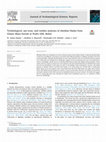
Obsidian artifacts are commonly recovered as funerary items in ancient Maya burials. Young and ol... more Obsidian artifacts are commonly recovered as funerary items in ancient Maya burials. Young and old individuals of both sexes and different social classes were buried with different quantities of obsidian, primarily in the form of prismatic blades. Although obsidian blades can serve many functions, those recovered from funerary contexts have traditionally been interpreted as bloodletters. Support for this interpretation has come from ethnohistoric sources, iconography, and the recovery of obsidian blades from locations with similar ritual associations, such as caches and caves. However, based on use-wear analyses it has been demonstrated that not all blades from caches and caves are bloodletters. In this paper we report on the findings of the technological, use-wear, and residue analyses of obsidian artifacts recovered from burials at the ancient Maya site of Pook's Hill, in modern-day Belize. Based on use-wear analysis, three of the blades from the Pook's Hill burials were likely used as bloodletters. Most blades from the burials were used for a variety of other tasks. Moreover, two blades recovered from non-burial contexts at Pook's Hill were used as bloodletters based on use-wear analysis. The results also suggest that the cutting-edge/mass ratio calculated for blades used as bloodletters may serve as a predictor of blade choice for bloodletting.
Members of the Toledo Regional Interaction Project and its precursor, the Pusilha Archaeological ... more Members of the Toledo Regional Interaction Project and its precursor, the Pusilha Archaeological Project, have been investigating the major ancient Maya sites of the southern Belize region since 2001. We have conducted mapping operations, test-pitting, and extensive and intensive structural excavations at Pusilha, Lubaantun, and Nim li Punit. We present here the results of the 2018 field season at Nim li Punit. During this season, we excavated and consolidated two platforms: Structures 6 and 7a. We also discuss the innovative ways we have used photogrammetry to document the contexts and artifacts we excavate.

Landscapes of the Itza: Archaeology and Art History at Chichen Itza and Neighboring Sites , 2018
Chichen Itza is one of the best-known yet most enigmatic cities of the ancient Maya. Important sc... more Chichen Itza is one of the best-known yet most enigmatic cities of the ancient Maya. Important scholarly debates still surround its basic chronology and the people who built and lived in the city. These academic discussions are complemented by a colorful background of popular speculation. Early explorers, such as Augustus Le Plongeon, merged the two and sometimes created wild tales involving lost continents, unrequited love, sacrificial virgins, and ancient Egypt. These narratives still fuel contemporary interest in Chichen Itza, as do the more recently developed tenets of New Age spirituality. Although there is no reason to think that Chichen Itza was built by aliens or Queen Moo of Atlantis, the city remains a focus of both scholarly and popular interest. In this introductory chapter, we hope to lift—or at least peek under— the veil of confusion surrounding Chichen Itza. Because we are archaeologists, we concentrate on the history of archaeological exploration and the interpretation of colonial and ancient texts concerning the site. Our goal here is to provide a background to " how we know what we know " about Chichen Itza and to hint at why we still do not know so many important things about this ancient Maya city.
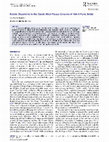
Nim li Punit is a small Classic Maya (ca. A.D. 150-830) center of Toledo District, Belize. Her... more Nim li Punit is a small Classic Maya (ca. A.D. 150-830) center of Toledo District, Belize. Here I describe excavations of two buildings within the royal palace group: Structures 7 and 8. Structure 8 was built in four stages dating to the Early to Late/Terminal Classic period. It probably served as a council house. Structure 7 was the residential palace and was built in two stages. An Early Classic burial demonstrates indirect interaction with Teotihuacan. During the Terminal Classic period, the shape of Structure 7 was altered, numerous caches were placed, and Tomb 5 was dedicated. It contained many important artifacts including a modeled effigy vase displaying the wind god, a chert eccentric, and the second largest piece of carved jade excavated legally in Belize. This, the Nim li Punit “wind jewel,” contains a long historical text and was worn by Late Classic kings. I argue that the pectoral tied Maya kings through ritual performance to breath, winds, rain, agriculture, and life.
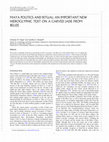
We describe a remarkable artifact discovered during our 2015 excavations at the Maya site of Nim ... more We describe a remarkable artifact discovered during our 2015 excavations at the Maya site of Nim li Punit, Belize. It is a T-shaped jade pectoral worn on the chest by ancient Maya kings during rites in which they scattered copal incense (Figure 1). These rituals are described or depicted on six carved stone monuments (stelae) at the site. What is more, two stelae at the site depict rulers wearing the pectoral. The reverse side of the jade contains a long historical hieroglyphic text. Had the piece been recovered by illegal means and ended up in a private collection, much of the text would make little sense and it could not possibly be ascribed to Nim li Punit. The priceless worth of the Nim li Punit pectoral, therefore, lies not only in its hieroglyphic inscription but also in its known archaeological context and contemporary images of its use. We briefly describe that context and present a translation of the important text on the jade pectoral, which we interpret as a " wind jewel. "


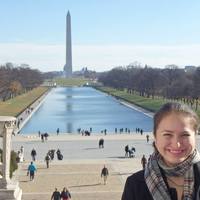





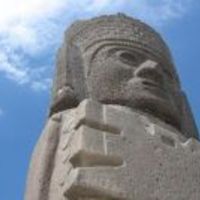

Uploads
Books by Geoffrey Braswell
The Maya lowlands of Guatemala, Belize, and southeast Mexico have witnessed human occupation for at least 11,000 years, and settled life reliant on agriculture began some 3,100 years ago. From the earliest times, Maya communities expressed their shifting identities through pottery, architecture, stone tools, and other items of material culture. Although it is tempting to think of the Maya as a single unified culture, they were anything but homogeneous, and differences in identity could be expressed through violence. 3,000 Years of War and Peace in the Maya Lowlands explores the formation of identity, its relationship to politics, and its manifestation in warfare from the earliest pottery-making villages through the late colonial period by studying the material remains and written texts of the Maya.
This volume is an invaluable reference for students and scholars of the ancient Maya, including archaeologists, art historians, and anthropologists.
With a focus on settlement pattern analyses, architectural studies, and ceramic analyses, this ground breaking book provides a broad view of this important relationship allowing readers to understand ancient perceptions about the natural and built environment, the role of power, the construction of historical narrative, trade and exchange, multiethnic interaction in pluralistic frontier zones, the origins of settled agricultural life, and the nature of systemic collapse.
The Ancient Maya of Mexico presents the results of new and important archaeological, epigraphic, and art historical research in the Mexican states of Yucatan, Campeche, and Quintana Roo. Ranging across the Middle Preclassic to the Modern periods, the volume explores how new archaeological data has transformed our understanding of Maya history. The Ancient Maya of Mexico will be invaluable to students and scholars of archaeology and anthropology, and all those interested in the society, rituals and economic organisation of the Maya region.
"
Moving beyond these traditional assumptions, the contributors to this volume present extensive new evidence from archaeology, iconography, and epigraphy to offer a more nuanced understanding of the interaction between the Early Classic Maya and Teotihuacan. Investigating a range of Maya sites, including Kaminaljuyu, Copán, Tikal, Altun Ha, and Oxkintok, they demonstrate that the influence of Teotihuacan on the Maya varied in nature and duration from site to site, requiring a range of models to explain the patterns of interaction. Moreover, they show that the interaction was bidirectional and discuss how the Maya in turn influenced Teotihuacan.
Papers by Geoffrey Braswell
The Maya lowlands of Guatemala, Belize, and southeast Mexico have witnessed human occupation for at least 11,000 years, and settled life reliant on agriculture began some 3,100 years ago. From the earliest times, Maya communities expressed their shifting identities through pottery, architecture, stone tools, and other items of material culture. Although it is tempting to think of the Maya as a single unified culture, they were anything but homogeneous, and differences in identity could be expressed through violence. 3,000 Years of War and Peace in the Maya Lowlands explores the formation of identity, its relationship to politics, and its manifestation in warfare from the earliest pottery-making villages through the late colonial period by studying the material remains and written texts of the Maya.
This volume is an invaluable reference for students and scholars of the ancient Maya, including archaeologists, art historians, and anthropologists.
With a focus on settlement pattern analyses, architectural studies, and ceramic analyses, this ground breaking book provides a broad view of this important relationship allowing readers to understand ancient perceptions about the natural and built environment, the role of power, the construction of historical narrative, trade and exchange, multiethnic interaction in pluralistic frontier zones, the origins of settled agricultural life, and the nature of systemic collapse.
The Ancient Maya of Mexico presents the results of new and important archaeological, epigraphic, and art historical research in the Mexican states of Yucatan, Campeche, and Quintana Roo. Ranging across the Middle Preclassic to the Modern periods, the volume explores how new archaeological data has transformed our understanding of Maya history. The Ancient Maya of Mexico will be invaluable to students and scholars of archaeology and anthropology, and all those interested in the society, rituals and economic organisation of the Maya region.
"
Moving beyond these traditional assumptions, the contributors to this volume present extensive new evidence from archaeology, iconography, and epigraphy to offer a more nuanced understanding of the interaction between the Early Classic Maya and Teotihuacan. Investigating a range of Maya sites, including Kaminaljuyu, Copán, Tikal, Altun Ha, and Oxkintok, they demonstrate that the influence of Teotihuacan on the Maya varied in nature and duration from site to site, requiring a range of models to explain the patterns of interaction. Moreover, they show that the interaction was bidirectional and discuss how the Maya in turn influenced Teotihuacan.